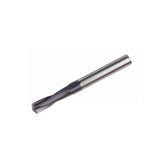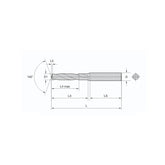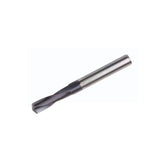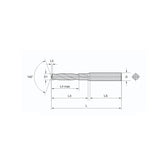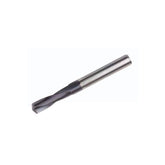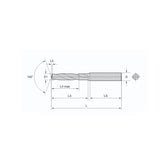Knowing How to Select Carbide Drill Bits Is More Important Than Knowing How to Use Them
Carbide Drill Bit Selection Guide
Maximizing Productivity and Minimizing Costs in Drilling Operations
The advent of carbide drill bits has revolutionized drilling operations. Where conventional drills required low feed rates and cutting speeds, modern carbide drills enable substantial productivity gains and cost reductions. This guide explores the four primary types of carbide drill bits and the key factors for optimal selection.
Key Insight: By correctly selecting carbide drill bits, manufacturers can increase drilling productivity by 30-50% while reducing cost per hole by 20-40% compared to traditional HSS drills.
Four Types of Carbide Drill Bits
Solid Carbide Drills
Entirely made of carbide material for maximum rigidity and precision.
- Precision: ±0.03mm (for Ø10mm)
- Best for: High-precision holes
- Rigidity: Excellent
- Regrinds: 7-10 times
Indexable Insert Drills
Feature replaceable cutting inserts for economical heavy-duty operations.
- Precision: ±0.3mm
- Best for: Roughing operations
- Cost Efficiency: Excellent
- Stability: Requires care during entry
Brazed Carbide Drills
Carbide tips brazed onto steel bodies for balanced performance.
- Precision: ±0.07mm
- Best for: General accuracy requirements
- Regrinds: 3-4 times
- Stability: Self-centering design
Replaceable Tip Drills
Modular system with interchangeable carbide crowns on steel bodies.
- Precision: ±0.07mm
- Cost Efficiency: Exceptional
- Tip Replacements: 20-30 times
- Flexibility: Multiple sizes per body
Selection Factors
1. Machining Accuracy
Accuracy requirements should drive your drill bit selection. Smaller holes typically have tighter tolerances, demanding higher precision tools.
High Precision
- Solid carbide (±0.03mm)
- Micro-drilling applications
- Aerospace components
Medium Precision
- Brazed carbide (±0.07mm)
- Replaceable tip (±0.07mm)
- Automotive parts
Roughing Operations
- Indexable insert (±0.3mm)
- Followed by boring
- Structural components
2. Machining Stability
Machine tool stability and drill design significantly impact drilling performance and tool life.
Stable Operations
- Solid carbide: Superior rigidity
- Brazed carbide: Self-centering
- Replaceable tip: Flexible yet stable
Special Considerations
- Indexable drills >4xD: Reduce initial feed
- Angled entry: Reduce feed 30-50%
- Lathe operations: Avoid solid carbide
3. Chip Evacuation & Coolant
Effective chip removal is critical for drilling performance, especially in deep hole applications.
Chip Control
- External coolant for depths <1xD
- Through-tool coolant for deeper holes
- Match coolant to material
Pressure Requirements
- 30-100 psi for shallow holes
- 100-300 psi for medium depth
- 300-1000 psi for deep holes
4. Cost Per Hole
Total operational cost should include tooling, regrinding, and productivity factors.
Tooling Economics
- Replaceable tip: Lowest cost/hole
- Indexable: Low insert cost
- Solid carbide: Higher initial cost
Long-Term Value
- Replaceable bodies: 20-30 uses
- Solid carbide: 7-10 regrinds
- Brazed carbide: 3-4 regrinds
Inventory Savings
- Replaceable system: -40% inventory
- Reduced backup tools
- Smaller storage footprint
